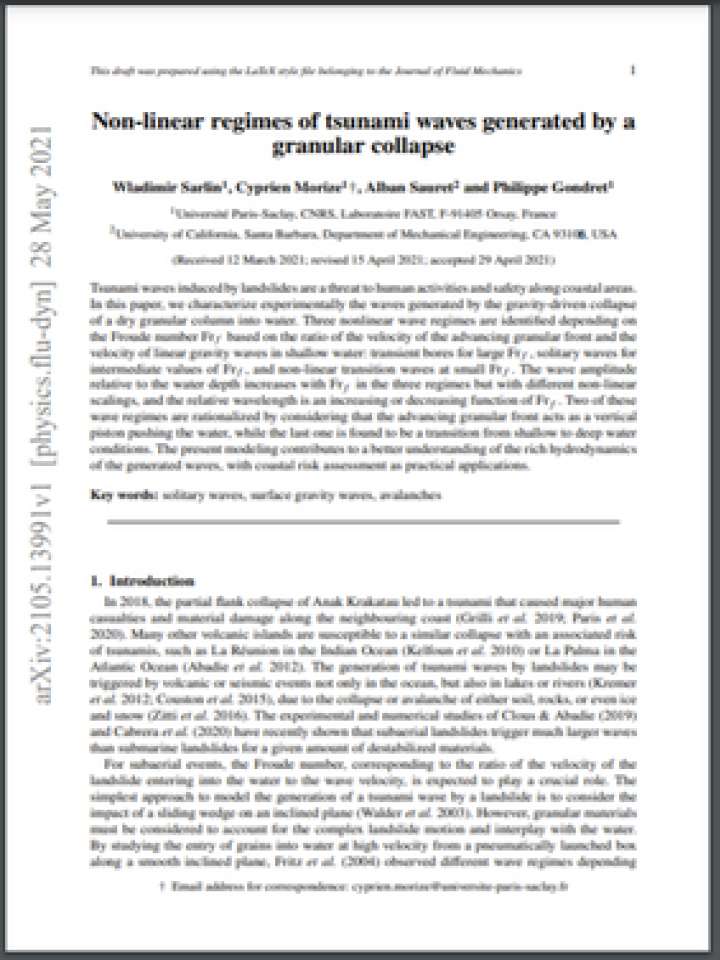Nonlinear regimes of tsunami waves generated by a granular collapse
In this paper, the authors characterize experimentally the waves generated by the gravity-driven collapse of a dry granular column into water. Tsunami waves induced by landslides are a threat to human activities and safety along coastal areas. The generation of tsunami waves by landslides may be triggered by volcanic or seismic events not only in the ocean, but also in lakes or rivers, due to the collapse or avalanche of either soil, rocks, or even ice and snow.
In this study, three nonlinear wave regimes are identified depending on the Froude number based on the ratio of the velocity of the advancing granular front and the velocity of linear gravity waves in shallow water: transient bores for large Froude number, solitary waves for intermediate values of Froude number, and non-linear transition waves at small Froude number. The wave amplitude relative to the water depth increases with Froude number in the three regimes but with different non-linear scalings, and the relative wavelength is an increasing or decreasing function of Froude number. Two of these wave regimes are rationalized by considering that the advancing granular front acts as a vertical piston pushing the water, while the last one is found to be a transition from shallow to deep water conditions. The present modeling contributes to a better understanding of the rich hydrodynamics of the generated waves, with coastal risk assessment as practical applications.
Explore further
